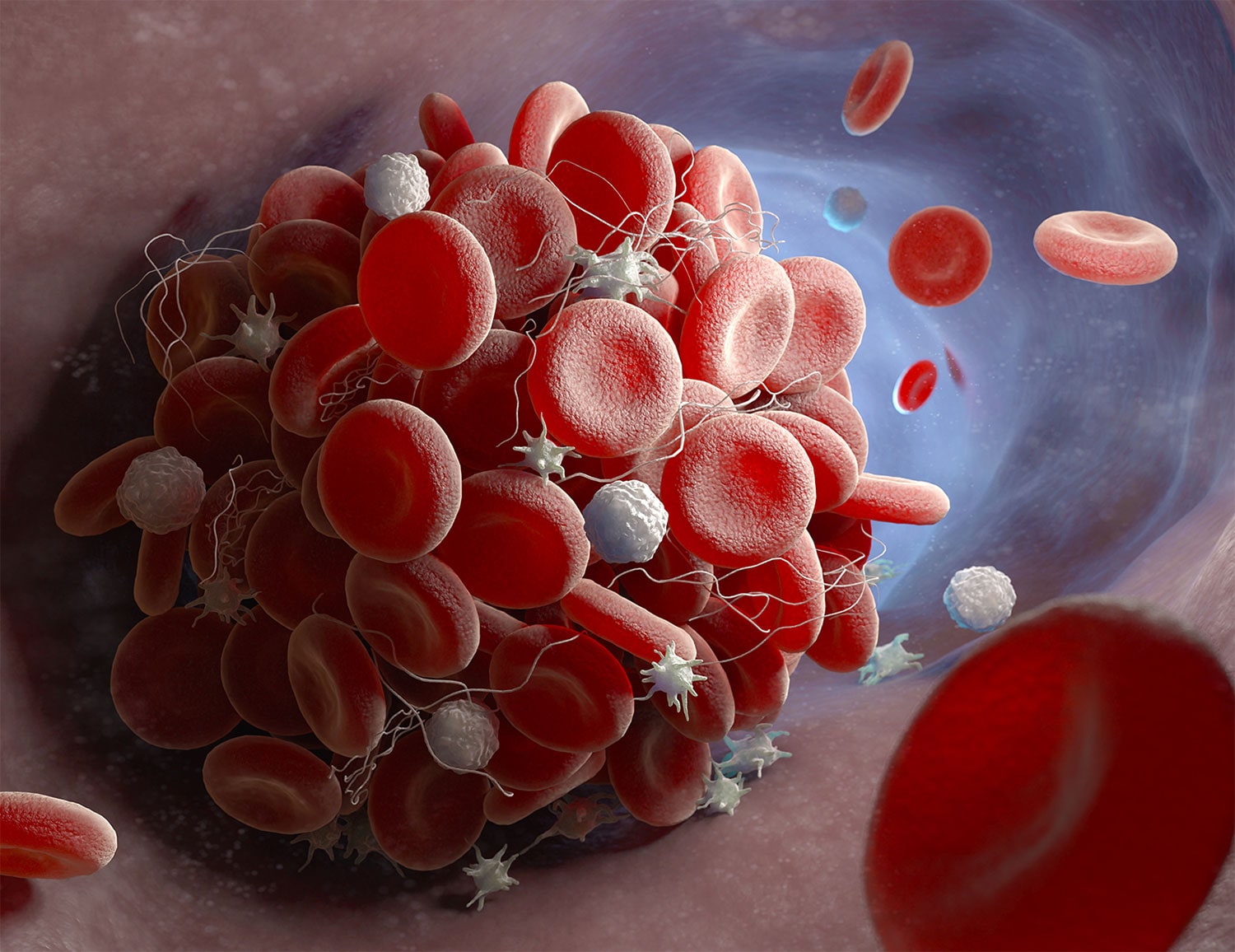ABOUT ONE IN FIVE cancer patients will develop a blood clot, yet many are unaware of their risk. Typically, patients are treated with heparin, an injectable blood thinner, after a blood clot develops. Now, new guidelines include the option of using oral medications to prevent potentially dangerous clots in at-risk cancer patients.
The new guidelines, developed by the American Society of Clinical Oncology (ASCO), allow high-risk cancer outpatients to use Xarelto (rivaroxaban) or Eliquis (apixaban) to prevent blood clots.
Doctors calculate the risk of blood clots based on cancer type, body mass index and blood counts. Research has found that patients with stomach or pancreatic cancers tend to have a very high risk of clots; those with lymphoma or lung, gynecologic, bladder, testicular or renal cancers tend to have a high risk.
Cancer cells release proteins into the blood that make it sticky and more likely to clot. Cancer treatments, including chemotherapy, immunotherapy, radiation therapy and surgery, can also raise the risk of blood clots. Clots most commonly form in veins, such as in the legs. If a piece of a clot breaks free, it can travel to the lungs, causing a life-threatening condition called a pulmonary embolism.
Oral drugs have been used since 2011 to prevent and treat blood clots in people who have atrial fibrillation (an irregular heartbeat) or who have hip or knee replacement surgery, which increases the risk of blood clots in the legs. Doctors were concerned about using these drugs to treat cancer patients because they can cause internal bleeding, which can be life-threatening if it occurs in the brain or stomach.
“We didn’t want to recommend these oral medications until we had evidence that they were effective and safe for cancer patients,” says Gary Lyman, a hematologist and oncologist at the Fred Hutchinson Cancer Research Center and University of Washington in Seattle, who served on the committee that created the new guidelines.
To learn more, researchers launched randomized clinical trials for each drug that enrolled cancer patients at high risk for blood clots. The findings were published Feb. 21, 2019, in the New England Journal of Medicine. The Xarelto study, co-led by Lyman, started in 2015. It compared Xarelto to a placebo in 841 cancer patients. The Eliquis study, started in 2014, compared Eliquis to a placebo in 563 cancer patients. All study participants started taking the drugs at the beginning of a new course of chemotherapy.
The studies found that both drugs reduced the risk of blood clots by about 60%. In the Xarelto study, 11 patients (2.6%) who took the drug developed a clot compared to 27 patients (6.4%) who took a placebo. Major bleeding occurred in eight patients (2%) in the Xarelto group compared to four patients (1%) in the placebo group. In the Eliquis study, 12 patients (4.2%) who took the drug developed a clot compared to 28 patients (10.2%) who took a placebo. Major bleeding occurred in six patients (2.1%) in the Eliquis group compared to three patients (1.1%) in the placebo group.
“Risk [of a clot] is higher in the first few months of a cancer diagnosis, but it can also rise during chemotherapy or after major surgery, such as abdominal surgery,” says Alok Khorana, a gastrointestinal oncologist at the Cleveland Clinic in Ohio who co-authored the Xarelto study. “Patients should be assessed for their risk on an ongoing basis. Adding new options for prevention is a big change in the field.”
Adds Lyman, “The studies show that these drugs prevent serious complications in high-risk patients and should be considered after weighing the benefits with the risk of bleeding.”
Cancer Today magazine is free to cancer patients, survivors and caregivers who live in the U.S. Subscribe here to receive four issues per year.





